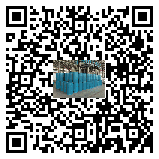Alcohol-soluble leveling agent: the "invisible engineer" for smooth coating
In the coating process of liquid materials such as paint and ink, surface defects such as brush marks, orange peel, and shrinkage
holes are often a headache. The root cause of these problems is the imbalance of surface tension caused by uneven material flow,
and alcohol-soluble leveling agent is the "invisible engineer" to solve this problem. It makes the coating surface as smooth and
uniform as a mirror by precisely controlling the surface properties and rheological behavior of liquid materials. It is widely used
in many fields such as automobiles, furniture, electronics, and photovoltaics.
I. The core mechanism of alcohol-soluble leveling agent
Alcohol-soluble leveling agent uses alcohol solvents as carriers, and its core components are mostly modified polysiloxanes,
acrylates or fluorocarbon polymers. These components work through two key mechanisms:
Surface tension gradient elimination:
When the liquid material dries, the difference in surface tension between the inside and the surface will form turbulence, resulting
in defects such as orange peel and brush marks. The leveling agent molecules will spontaneously migrate to the coating surface,
reduce the surface tension, and eliminate the gradient difference. For example, polyether-modified siloxane can form a monolayer
on the coating surface, reducing the surface tension from 35mN/m to 22mN/m, making the coating flow more evenly.
Rheological properties regulation:
By synergizing with thixotropic agents, leveling agents can extend the "leveling window" of materials. In solvent-based coatings, it
slows down the surface drying speed, allowing the coating to flow fully before curing; in water-based systems, it balances viscosity
and fluidity to avoid sagging or excessive viscosity.
II. Three major technical schools of alcohol-soluble leveling agents
According to the chemical structure and application scenarios, alcohol-soluble leveling agents can be divided into three categories:
Silicone: represented by polyether/polyester-modified siloxane, this type of leveling agent significantly improves the wettability of the
substrate through the low surface tension characteristics of the siloxane segment. For example, adding 0.3% of polyether-modified
siloxane to automotive varnish can eliminate orange peel defects and increase the mirror gloss by more than 15%. Its advantage is
that it can effectively reduce surface tension, but attention should be paid to compatibility with the system to avoid stabilizing
foam or affecting interlayer adhesion.
Acrylates:
With polyacrylate copolymers as the core, the balance between leveling and anti-shrinkage is achieved through molecular weight
control. Medium and high molecular weight products have both degassing and defoaming functions and are often used in
water-based industrial paints; low molecular weight products are suitable for high-solid coatings. For example, in furniture matte
paint, adjusting the amount of acrylic leveling agent from 0.5% to 0.8% can reduce surface haze defects by 90%.
Fluorocarbons: Fluorine-modified polymers are the ultimate solution, with a surface tension as low as 18mN/m, specializing in
the coating difficulties of low surface energy substrates (such as PP plastics and PTFE). In photovoltaic backplane coatings,
fluorocarbon leveling agents can ensure coating uniformity, making the contact angle change less than 3° after weathering tests
(2500 hours QUV), which is significantly better than traditional silicone leveling agents.
III. Multiple application scenarios of alcohol-soluble leveling agents
Automotive coatings:
Adding 0.2% phosphate-modified acrylic leveling agent to electrophoretic paint can reduce sagging defects; using polyester-modified
siloxane in the varnish layer can eliminate orange peel and improve the mirror effect, increasing the DOI (distinctness of image) value
from 85 to 92.
Wood coatings: For the porous structure of the solid wood surface, alcohol-soluble leveling agents need to be used in combination with
wetting agents. For example, in UV-curing wood paint, adding 0.5% of acrylic leveling agent and 0.3% of organic fluorine wetting agent
can reduce the brush mark coverage from 30% to less than 5%.
Industrial anti-corrosion coatings: In steel structure coating, leveling agents need to take into account both anti-corrosion and leveling
properties. A ship coating company uses fluorocarbon-modified leveling agents to reduce the rust area of the coating from 15% to 2%
after the salt spray test (1000 hours), while maintaining the surface flatness.
Special printing inks: In gravure printing, leveling agents can reduce jagged edges of dots. A packaging printing factory increased the
edge sharpness of 150lpi dots by 40% by adding 0.8% polyether-modified siloxane to alcohol-soluble ink, and the image clarity reached
international standards.
IV. Key considerations for selection and use
Substrate adaptability: Low surface energy substrates (such as PP plastics) must use fluorocarbon leveling agents; porous substrates
(such as wood) must be used with wetting agents; high-temperature baking systems (such as powder coatings) require heat-resistant
leveling agents (such as silicone-modified acrylates).
Process matching: The spray system requires fast leveling, and low-viscosity silicones must be selected; roller coating/brush coating
processes require extended open time, and acrylate block copolymers can be selected; dip coating processes must be used with
anti-flow agents.
Environmental protection and safety:
Food contact materials (such as can inner wall coatings) must comply with FDA standards and choose heavy metal-free and low-VOC
products; water-based systems tend to use solvent-free acrylic leveling agents to reduce VOC emissions; bio-based leveling agents
(such as castor oil derivative modified products) are becoming a new trend in environmental protection.
V. Future technology evolution direction
Multifunctional composite: Developing composite additives with leveling, defoaming and wetting functions can reduce the complexity
of formulations and reduce costs.
Intelligent response type: Thermosensitive or photosensitive leveling agents can automatically adjust the surface tension according to
environmental conditions, and are suitable for emerging fields such as self-healing coatings and smart packaging.
Application of nanotechnology: Nano-silica/alumina composite leveling agents can simultaneously improve the hardness and wear
resistance of coatings, showing great potential in 3C product coating.
From the mirror gloss of car bodies to the weathering protection of photovoltaic backplanes, from the matte texture of high-end
furniture to the safe printing of food packaging, alcohol-soluble leveling agents are reshaping the surface aesthetics of modern
industry in an "invisible" manner. With the advancement of green chemistry and intelligent materials, this field will continue to break
through performance boundaries and create more sophisticated and durable coating solutions for mankind.


